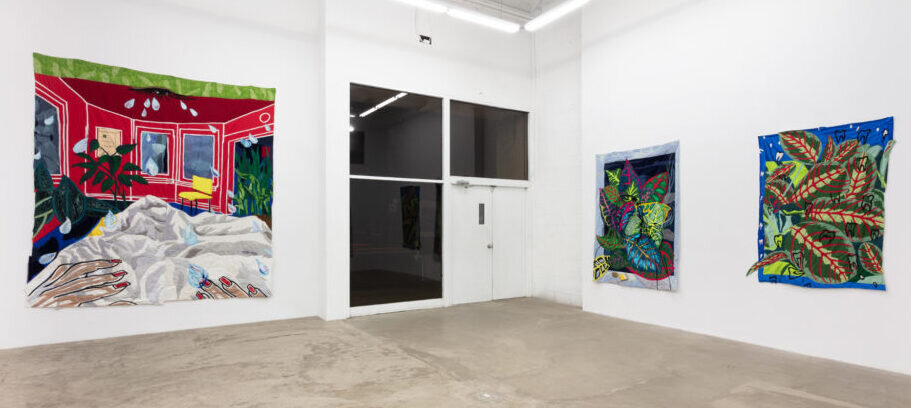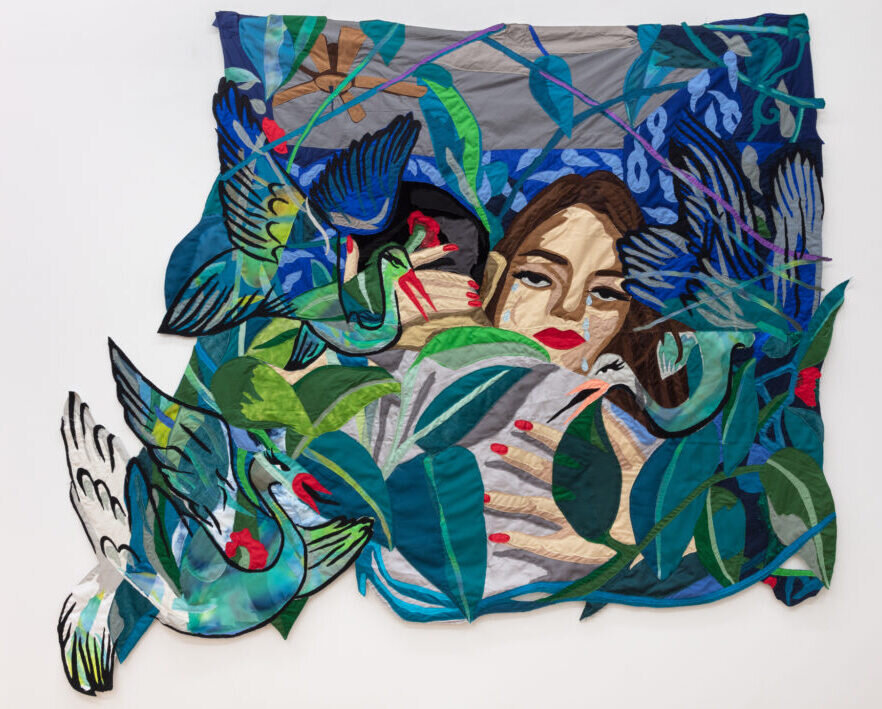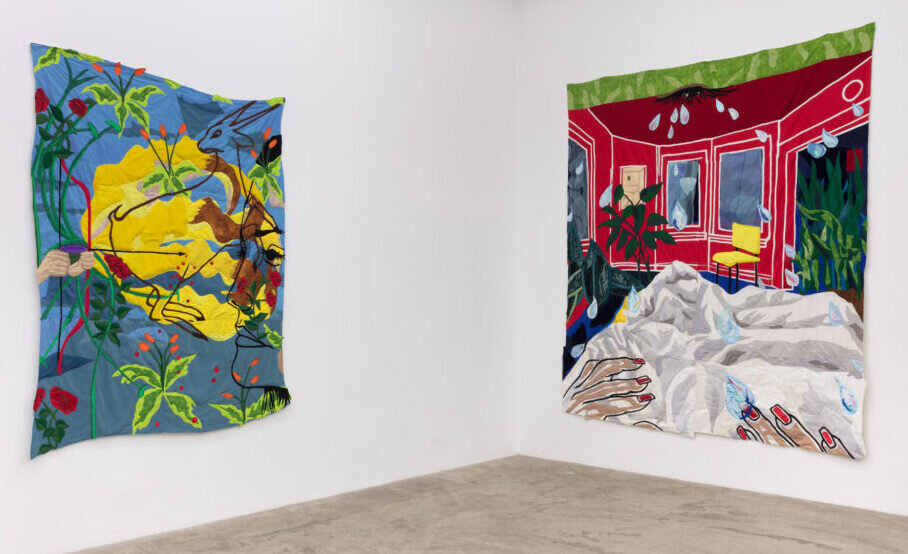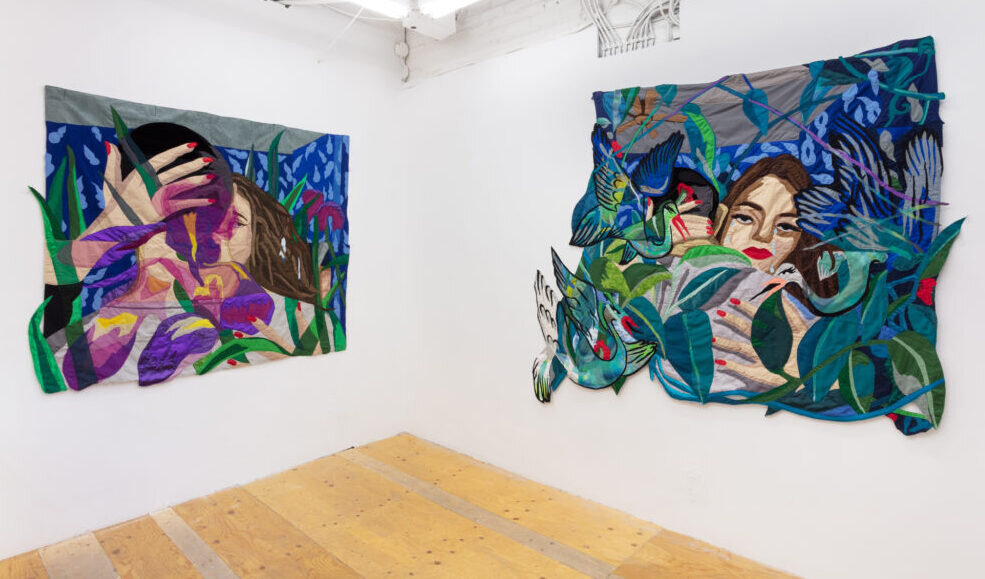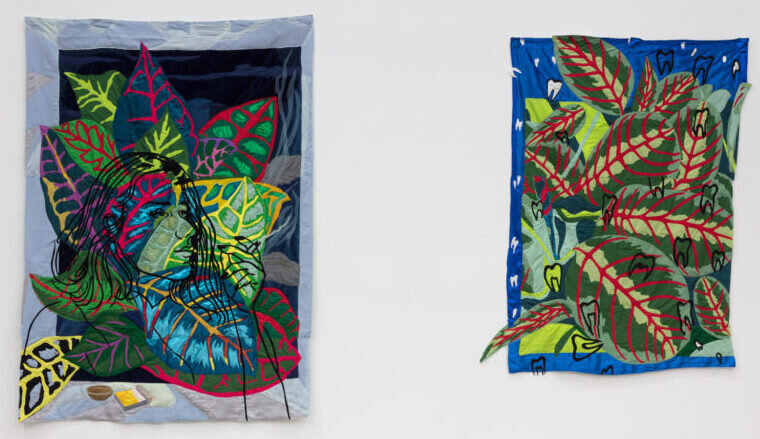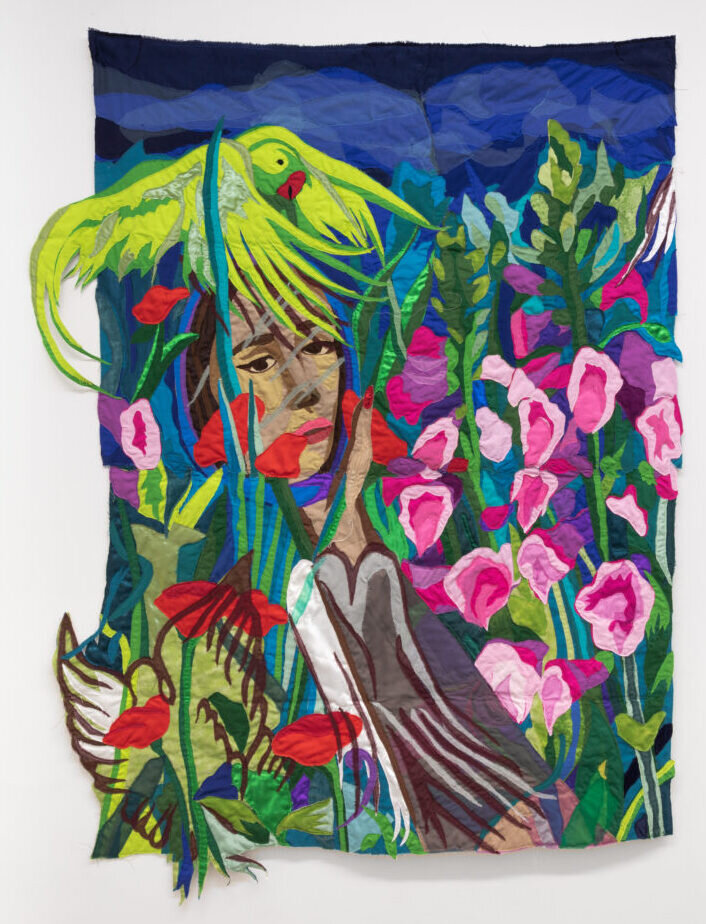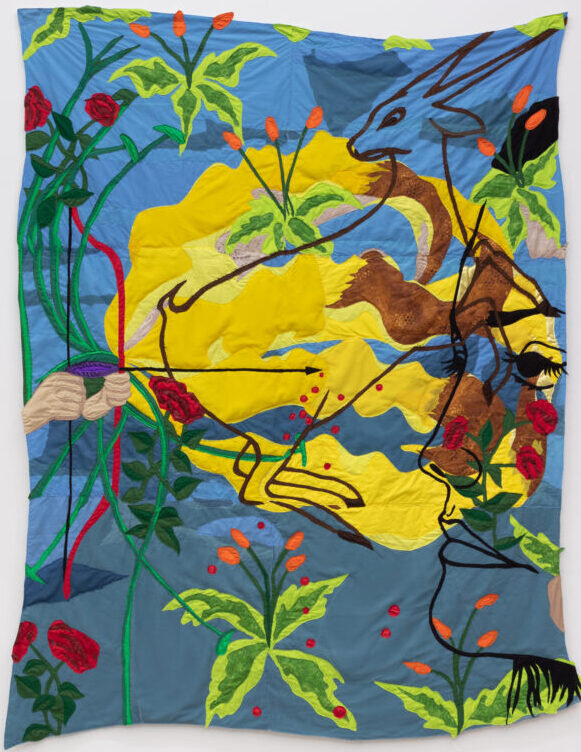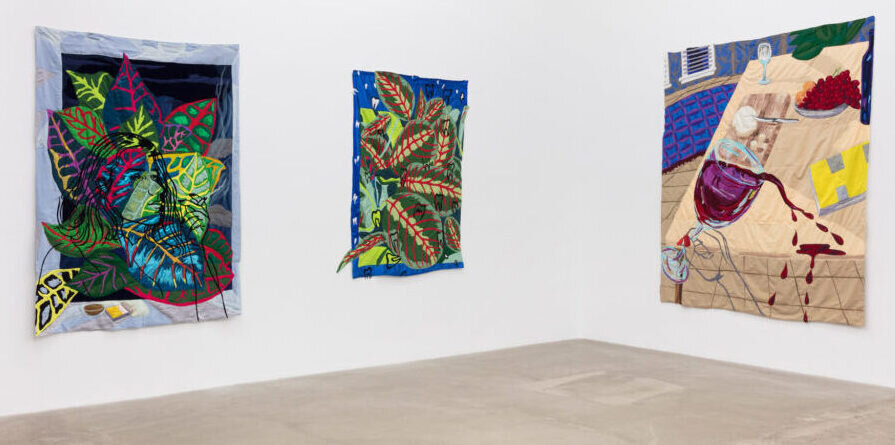What is the feeling of “home”? How do we know when we’ve found it? Textile artist Hangama Amiri, in her first exhibition at Cooper Cole gallery, reflects on the aspects of life that make up what home is: the banalities, the human connection, and our relationship to nature.
This exhibition entitled Mirrors and Faces is an exploration of the diaspora identity, which includes the deeply personal experience of loneliness and love. Specifically, Mirrors and Faces is about migration, and the conflicted journey to find inner peace while discovering a new identity. As a woman, Amiri’s artwork reflects on the cultural issues around gender in her homeland, Afghanistan, fragility, childhood, the refugee experience and our bond with intimacy amidst the Covid-19 pandemic.
Installation view of Hangama Amiri, Mirrors and Faces at Cooper Cole Gallery
The show displays eleven large scale textiles that have a painterly approach, featuring bold and vivid colours. These works are immersive and imaginative, with fantastical elements and dreamlike motifs comprising foliage, domestic space, and metaphors for cultural memory, such as poured wine, parrots, tears and arrows. Similar to a mosaic, Amiri allows for everyday objects to tell her story, weaving together representations of life — believing that fabric has a generosity and “touch” that allows her to produce what paint and other mediums cannot.
Hangama Amiri, The lovers I / The Chanting Storks, 2021, chiffon muslin, cotton, polyester, silk, acrylic paint, suede, and found fabric, 69″ x 78″
Cooper Cole Gallery presented a virtual artist talk (October 12, 2021), “In Conversation with Hangama Amiri and Muheb Esmat”. Esmat — who is a curator with focused efforts in contemporary visual culture from Afghanistan — and Amiri discussed memory, diaspora, symbolism, isolation, intimacy, self-portraiture, and breaking taboos of representation. In conversation, Amiri reflects on her relocation to the United States as a self-identified Afghan artist. In her migration, memories of home were filtered through, for example, New York kebab and fabric shops. She cites that these pangs of nostalgia in the United States allowed her to have a self-actualized communication with her migration story and how it has helped her find an identity.
Installation view of Hangama Amiri, Mirrors and Faces at Cooper Cole Gallery
At the heart of Mirrors and Faces is the relationship between East and West, observing connectivity, especially spaces and ways we can connect with each other and ourselves. Amiri poses the question of most immigrants: what do you leave behind when moving from one country to another? What part of yourself and your belongings? What do you keep? Amiri and Esmat describe how Amiri’s work is both individual and collective, acting on the public and private sphere, as she celebrates who she is in her art but in a way that others can relate to. Her work is both self-biographical and also a shared experience.
Installation view of Hangama Amiri, Mirrors and Faces at Cooper Cole Gallery
Symbolism has an important role in her work. Mirrors and Faces presents cultural metaphors that emote nostalgia for Afghanistan. Additionally, like many others during the Covid-19 pandemic, she found that spending time outdoors provided self-soothing periods during hardship. As her relationship with nature became more intimate, she began to use elements of the natural world as symbols for protection and shields against harm.
Hangama Amiri, Self-portrait with the Croton Petra Plants, 2021, Chiffon, muslin, cotton, polyester, silk, velvet, net mesh, colour pencil, and found fabric, 80″ x 58″ (left) & The Fallen Dream, 2021, Chiffon, muslin, cotton, polyester, and silk, 69.5″ x 56″ (right)
She explains, for example, that birds in Afghanistan have a rich cultural history as feminine healers that tell stories and are often representations of the human soul. In her own work, sometimes she depicts herself as a bird, representing a calm self-protection.
Hangama Amiri, Self-portrait with Tooti Parrot, 2021, chiffon, muslin, cotton, polyester, silk, net mesh, suede, colour pencil, velvet, and found fabric, 58.5″ x 44.5″
In Wounded Deer, Amiri depicts herself looking at an arrow aimed at her eyes. At her side, a deer has also been punctured by the weapon. Amiri explains that this is an expression of her relationship to her homeland and also a self-portrait. The deer is a symbol of hope. This work articulates the artist’s feelings of vulnerability and betrayal as an Afghan woman, negotiating desires to occupy, dominate, and assert power in reference to Amiri’s hometown of Kabul being taken over by the Taliban. One may deduce from her previous sentiments about nature that she is bonding the deer and herself by sewing them in a similar style. The hands of the hunter which are in natural colour, may represent “the other” that invite grievance.
Hangama Amiri, Wounded Deer, 2021, chiffon, muslin, cotton, polyester, silk, suede, net mesh, and found fabric, 98″ x 75”
The exhibition, Mirrors and Faces, has a translucent quality as it produces a figurative reflection. Who are you seeing when you look at these fabricated mirrors? Is that your face? Hangama Amiri knows only you have the answer.
Installation view of Hangama Amiri, Mirrors and Faces at Cooper Cole Gallery
Georgia Gardner
Images are courtesy of Cooper Cole Gallery
*Exhibition information: Mirrors and Faces, September 24 – November 6, 2021, Cooper Cole, Cooper Cole Gallery, 1136 Dupont St, Toronto. Gallery hours: Wed – Sat 12 – 6 pm.

